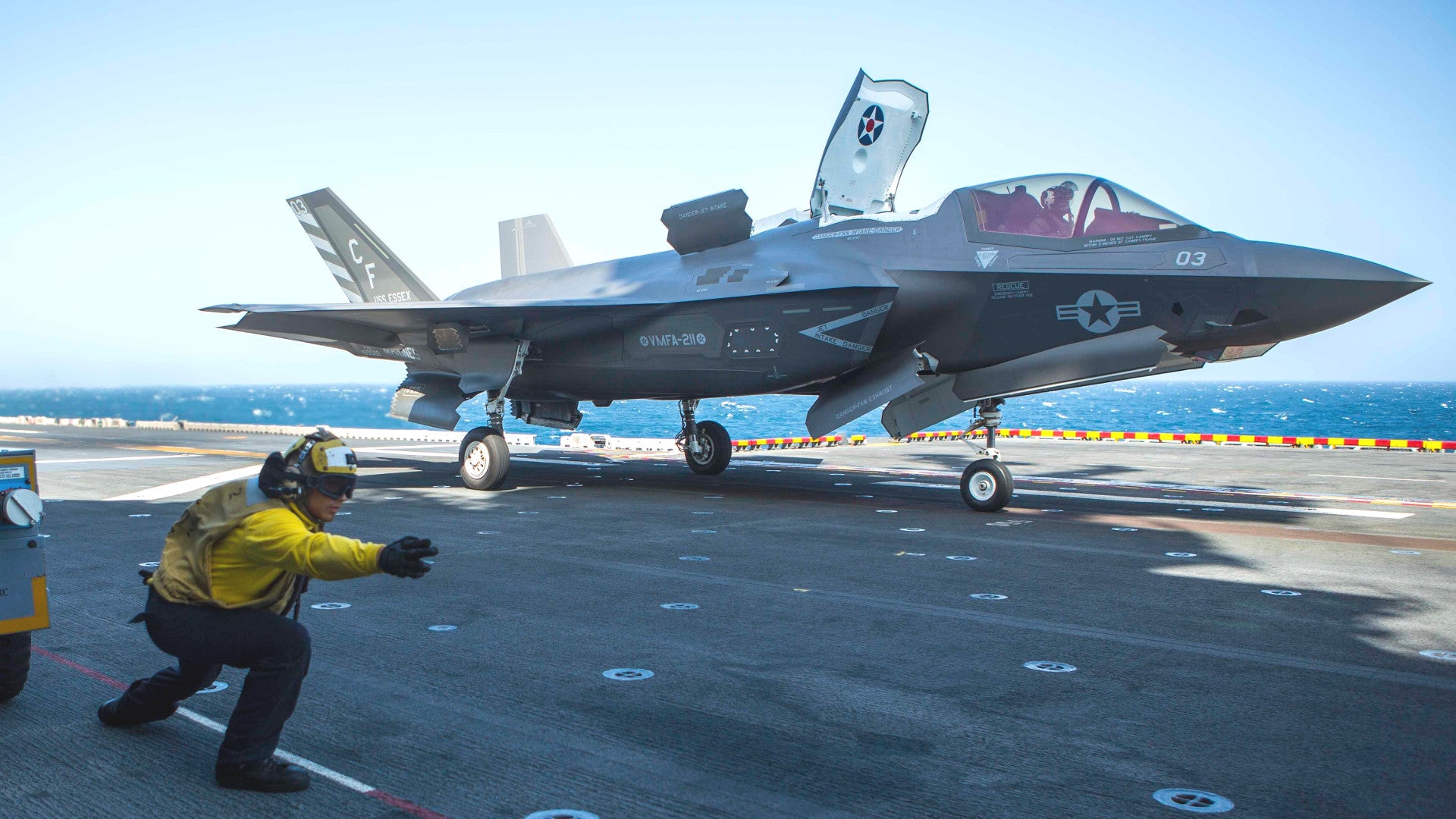For the first time ever, U.S. Marine Corps F-35Bs Joint Strike Fighters are on an operational deployment in the Gulf of Aden, bringing them the closest they’ve ever been to conflict zones in Iraq and Syria, Yemen, and Somalia. The stealthy jets and their pilots set to join thousands of other U.S. Navy sailors and Marines for a two-week training exercise while they’re in the region, but there’s still no indication they are headed for actual combat, at least not yet.
The Essex Amphibious Ready Group (ARG), which includes the Wasp-class amphibious assault ship USS Essex, the San Antonio-class amphibious transport dock USS Anchorage (LPD 23), and the Whidbey Island-class amphibious dock landing ship USS Rushmore, has been in the area since earlier in September 2018. The ships are carrying elements of the 13th Marine Expeditionary Unit (MEU), which includes the detachment of six F-35Bs from Marine Fighter Attack Squadron Two One One (VMFA-211).
The entire ARG will participate in so-called Theater Amphibious Combat Rehearsal (TACR) off the coast of the East African country of Djibouti starting on Sept. 8, 2018. The drills will last two weeks and approximately 4,500 Navy and Marine Corps personnel will take part in total.
The Navy’s Task Force 51, which oversees amphibious operations under U.S. Fifth Fleet command, will lead the exercise and the 5th Marine Expeditionary Brigade (MEB) will manage Marine forces during the drill. The U.S. Fifth Fleet manages maritime operations on the Indian Ocean side of the Middle East, as well as around the Horn of Africa.

“TACR provides our U.S. Navy and Marine Corps team the opportunity to execute complex missions at sea, from the sea and ashore,” U.S. Marine Corps Brigadier General Matthew Trollinger, who serves as the commander for both Task Force 51 and the 5th MEB, said in a statement earlier in September 2018. “TACR allows us to demonstrate the enhanced capabilities and tactical lethality that embarked F-35Bs on an ARG bring to the region,” U.S. Marine Corps Colonel Chandler Nelms, who is in charge of the 13th MEU for this deployment, added.
The exercise will include, but may not be limited to individual drills involving defending the ARG against simulated air attacks and naval mine threats, as well as performing various quick reaction force type missions, such as boarding potentially hostile ships and rescuing downed airmen and recovering their aircraft. There are always Navy ARGs, together with Marine MEUs, conducting routine patrols around the world to provide a persistent capability to quickly respond to a wide variety of contingencies, ranging from active combat operations to non-combat humanitarian missions.
Neither the Navy nor the Marines have announced any intention to send the F-35Bs into combat anywhere in the Middle East or East Africa while the Essex and her ARG are in the region, but there is always a possibility the U.S. military could decide to do so. Since 2014, elements of various MEUs have detached air and ground elements to support the campaign against ISIS terrorists in Iraq and Syria.

The F-35Bs, along with the rest of Essex‘s ARG could face other threats and hazards while operating near Djibouti, though, including the ever-present danger of anti-ship cruise missiles,
naval mines, and other attacks from Iranian-backed Houthi rebels in Yemen on the other side of the Gulf of Aden. There have also been reports that Chinese forces at their own base in Djibouti have used lasers to try and blind pilots and otherwise harass American military aircraft operating in the region.
If nothing else, the deployment shows that the Marine Corps is continuing to integrate its F-35Bs into routine activities around the world, increasing the likelihood that the aircraft will eventually be in the right place at the right time for the USMC to push them into their first actual combat action.
Contact the author: jtrevithickpr@gmail.com
